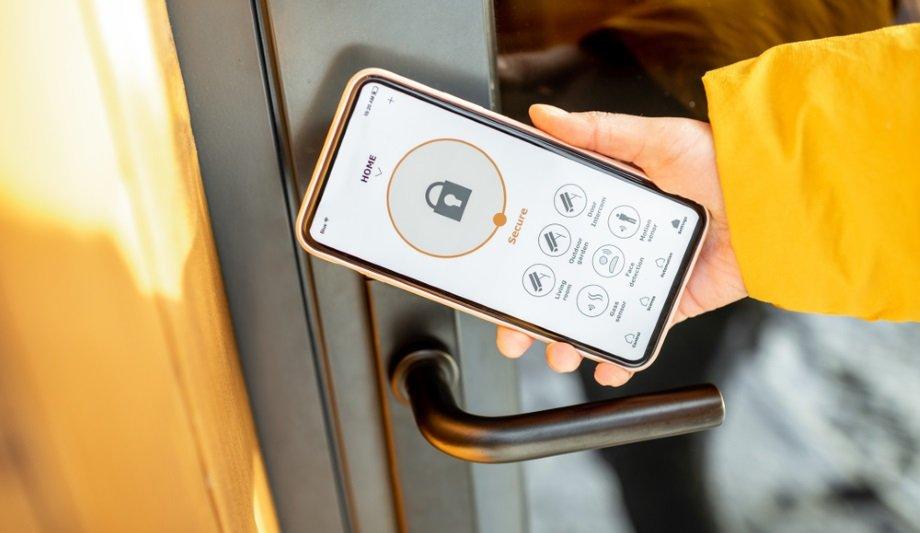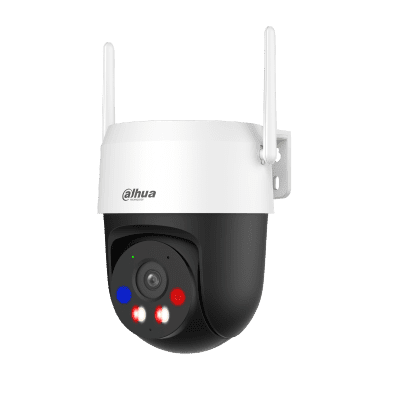What are the latest developments in mobile access control?
Editor Introduction
Who needs cards when everyone has a smartphone? That’s the key question underlying the access control industry’s transition to mobile credentials. But the transition is easier said than done, and mobile credentialing, for all its advantages, also has limitations, which further innovation continues to address. Wider acceptance comes next, driven by use cases in various vertical markets. We asked this week’s Expert Panel Roundtable: What are the latest developments in mobile access control?
Modern access control solutions reflect society’s growing reliance on smartphones, as today’s technology providers replace key cards and key fobs with mobile applications capable of a wide range of authentication protocols. Some use biometrics, such as facial recognition or a fingerprint, others use QR codes, and others continue to use more traditional credentialing systems like passcodes or swiping a mobile app. They all serve as a critical form of identity verification for users looking to unlock or access doors, elevators, turnstiles, or even office printers. These solutions have helped countless facilities modernise their security systems, eliminating the problem of lost or stolen keys and reducing the reliance on 24/7 door staffing. Mobile access control systems come with additional security benefits, including the ability to revoke access at any point and maintain a log of entry events. It’s a robust but simple way to streamline access control for an entire facility.
We are already seeing several organisations, especially in the education sector, adopting a mobile-first access control strategy. With near-field communication (NFC), you can simply use a smartphone or smart watch and tap it right to a reader to open a door without having to open an app. Another interesting development that is likely to advance the adoption of mobile access control is the Physical Security Interoperability Alliance’s Secure Credential Interoperability (SCI) initiative. SCI aims to increase interoperability and reduce the barriers to portability, supporting enterprise credential management across multiple device manufacturers. The SCI leverages existing standards and commercially available technology. This initiative will likely facilitate the integration of mobile access control and therefore encourage the development of non-proprietary solutions and a secure, open way to manage mobile credentials.
Our latest global research shows that demand for contactless mobile access is growing, with 42% of respondents planning to upgrade to mobile-ready systems given it improves operational efficiency and boosts user convenience. Additionally, virtual credentials remove the need for plastic cards, which is greener; and, when integrated with a building management platform, it is possible to enable a seamless user experience with all the systems and functions of a building. Nearly a third of respondents also state they will upgrade systems to introduce touchless solutions in response to the coronavirus pandemic, with biometrics also being considered. Secure system interoperability is another big development. Users want long-term, future-proof solutions that are easy to install. Clearly this saves money. Consultants and integrators are moving away from proprietary solutions to embrace open standards-based technology, where software upgrades can be easily and securely managed through the cloud.
Technology has evolved to enhance convenience and safety by incorporating modern elements of daily life into security software. An example of this is intercom integration with mobile phones or tablets. Unlike an interior intercom station that is mounted on the wall and can only be used when a person is physically present, a mobile intercom app can be used from any location. While people are often on-the-go, they typically have their mobile phone close by, and mobile app integrations provide convenience and flexibility. The installation process for mobile apps is more efficient than installing an individual door panel in each unit, especially in older buildings where installation may be more complicated. Intercoms solutions can even incorporate video with mobile app integrations to further amplify the level of security.
Mobile credentials have made a substantial impact over the last few years. According to Gartner, by the end of this year, 70% of organisations adopting biometric authentication for access in the workforce will manage it through smartphone apps, regardless of the endpoint system being used. Considering this number was fewer than 5% in 2018, you can see how drastically things are transforming. In addition to being convenient, scalable, and more secure, mobile credentials are a genuinely practical option for end-users. Much like cards, keys, or other physical access control structures that can be tied into any closed-loop expense system (typically found at healthcare, hotels, and campus environments), mobile credentials can be as well. This component serves as a convenient solution for users who want to integrate their access control with numerous functions or other apps such as dining payments, library privileges, or room charges.
The continued rapid adoption and popularity of mobile credentials in access control, first through mobile phones and more recently through smart watches, shows no sign of letting up. There are multifaceted advantages to both the end user and the security manager allowing for a more flexible and often more secure system. The convenience of organising and deploying credentials remotely can make the administration process far less onerous, while most smartphones have authentication processes such as fingerprint and facial recognition built-in, allowing for added levels of biometric security not present with a traditional card or key fob. For the end user, the future of mobile access control will be dominated by further convenience developments and more widespread availability and adoption. On the system administration side of things, we’re already seeing a lot of development toward remote mobile administration, allowing security managers to manage their systems from the convenience of their phones.
It’s said that over half of the world’s entire population now owns a smartphone. With that, we’re seeing a rapid development in digital technology, including recent advancements in mobile access control. From iOS integration to data encryption, online systems continue to change the way building networks operate, and various mobile access control applications are making use of the rising standards in this field. The use of mobile phones and their apps has been a revelation to the hotel industry for example, where remote access now permits guests entry to various types of access points – removing the need for traditional key card methods for check in, check out and even lift access. When developing the Consort Mobile Access App, we recently found Bluetooth functionality and intuitive cloud compatibility were central to its success, with these elements – alongside sustainability – becoming core development areas when it comes to modern mobile access control.
HID Global recently published a trend report from IFSEC Global on the state of physical access control. Our previous report, issued in 2020, found that 28% of respondents were either in the process of upgrading to mobile technology, or already had it. The figure for this year now stands at 38% - a significant increase. Interestingly, 11% of those who had upgraded to mobile readers had yet to deploy mobile credentials, so while the market is growing rapidly, the technology will likely work in collaboration with – rather than displace - physical credentials. Other findings: 20% of respondents cited plans to deploy mobile ready equipment in the next three years, 41% said mobile access would be one of the top three features required in a new access control system, and 51% believed it would be one of the top three trends shaping the industry, overall.
Editor Summary
Mobile access control is already here, and here to stay, according to our Expert Panelists. The convenience and ubiquity of smartphones make them an almost inevitable part of the access control equation. As use of mobile credentialing grows, however, there are still reasons why cards are unlikely to disappear completely. Whether or not it’s for everyone, mobile access control clearly adds exciting new dimensions to security systems.
- Related links
- Aiphone Access control software
- Axis Communications Access control software
- Axis Communications CCTV software
- Genetec Access control software
- Genetec CCTV software
- HID Access control software
- TDSi Access control software
- TDSi CCTV software
- Aiphone Access control readers
- Axis Communications Access control readers
- HID Access control readers
- TDSi Access control readers
- Bar Code Access control readers
- Networkable Access control readers
- Biometric Access control software
- ANPR Software CCTV software
- Biometric Access control readers
- Standalone Access control readers
- Detection Software CCTV software
- Broadcast Messenger Access control software
- Mifare Access control software
- Drawing Software CCTV software
- Proximity Access control software
- IP Surveillance Software CCTV software
- Carpool Anti-passback Access control software
- Magnetic Stripe Access control readers
- Management Software CCTV software
- Central Monitoring Option Access control software
- Mifare Access control readers
- Monitoring Software CCTV software
- RFID Access control readers
- Surveillance Software CCTV software
- Door Monitoring Option Access control software
- Guard Tour Access control software
- Keypad Commands/Intrusion Zones Access control software
- License Access control software
- Management Systems Upgrade Access control software
- NetVue Interface to Nice Systems Access control software
- NStar software upgrade Access control software
- Remote software for telecode door entry phone system Access control software
- Visitor Management tool Access control software
- Related categories
- CCTV software
- Access control software
- Access control readers
Expert commentary
A modern guide to data loss prevention
DownloadThe truth behind 9 mobile access myths
Download7 proven solutions for law enforcement key control and asset management
DownloadAccess control system planning phase 2
DownloadSecurity practices for hotels
DownloadDahua P3AS-PV 3MP Outdoor Wi-Fi PTZ Camera with Active Defense
Climax Mobile Lite: Advanced Personal Emergency Response System (PERS)
Hanwha Vision 4CH AI Multi-sensor Camera with WAVE VMS























